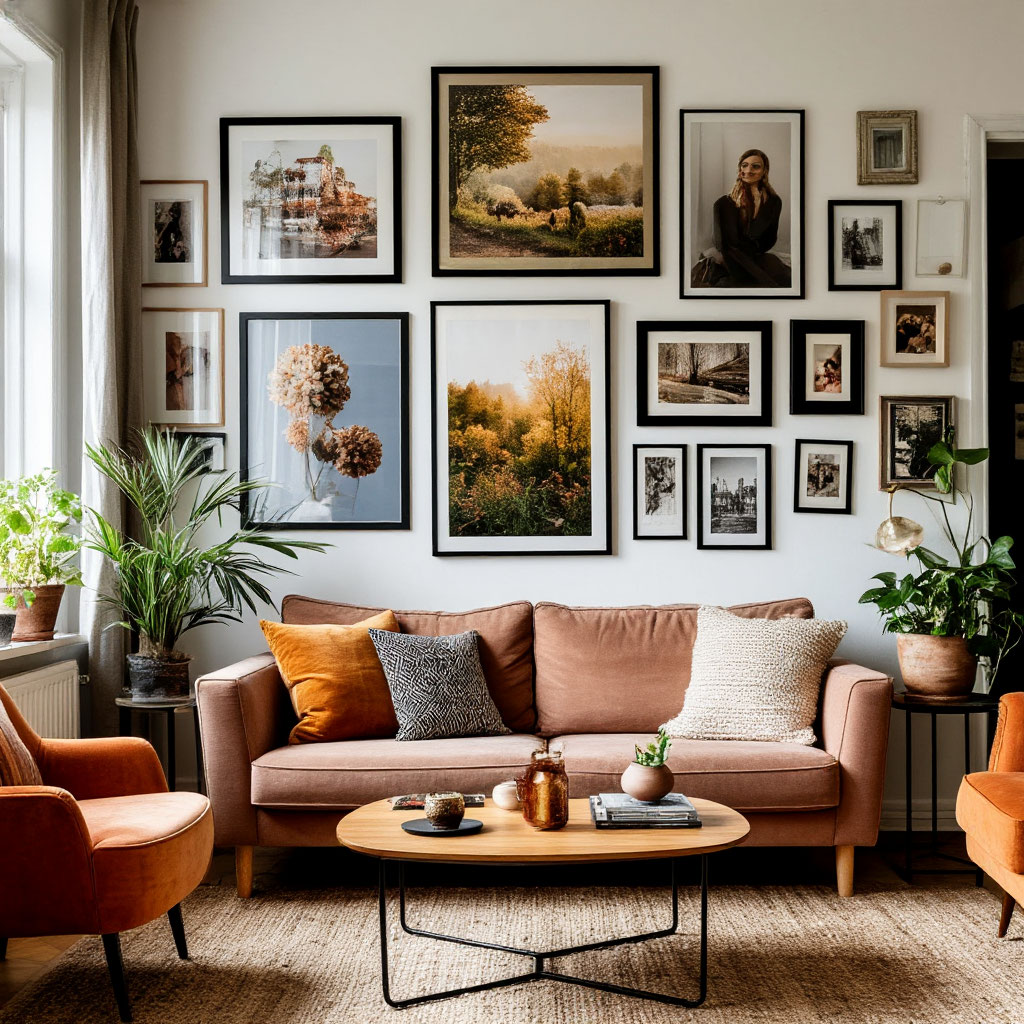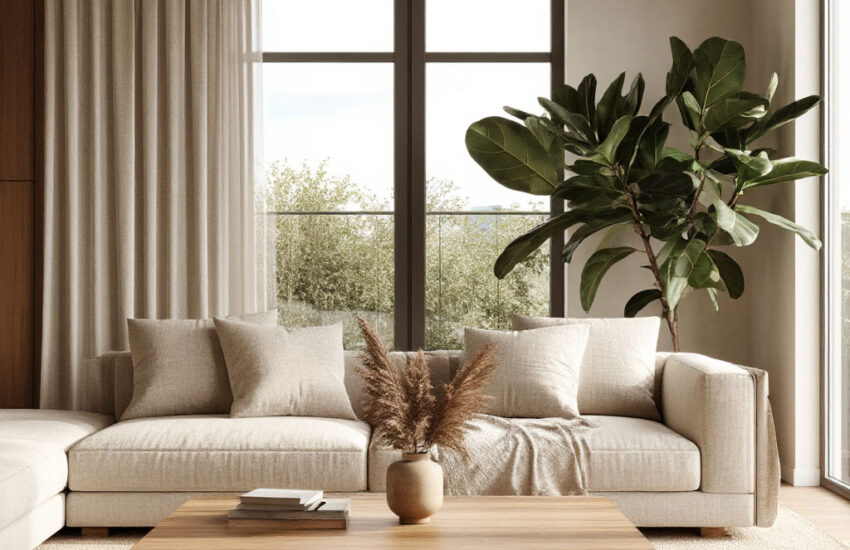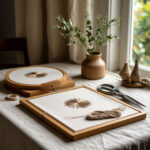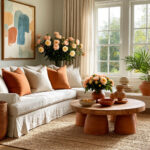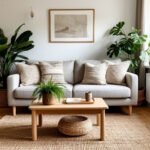Gallery Walls Made Easy: A Step-by-Step American Style Guide
Contents
Gallery walls are the perfect way to transform any empty space into a stylish showcase for your personality. Whether you’re into bold prints, family photos, or framed fabric art, this trend lets you mix and match to create a look that’s all yours.
Putting together a gallery wall the right way takes a little planning, but with the right wall decor tips, it’s easier than you think. From choosing the perfect frames to balancing sizes and textures, we’ll show you how to create a gallery wall like a pro. Get ready to transform your space with fresh wall art ideas. By the end of this article, you’ll be able to download a checklist — a clear, step-by-step guide to creating a gallery wall with confidence.
What is a gallery wall and why is it trending
Gallery walls have taken over home decor, and it’s easy to see why. Rather than one large painting, this approach allows you to tell a story using multiple items. These could be:
- family photos;
- vintage posters;
- framed fabric paintings.
The best part? There are no hard and fast rules. Feel free to use mismatched frames or stick to a consistent gallery wall layout. It’s all about personal expression, which is why designers and DIYers love this trend.
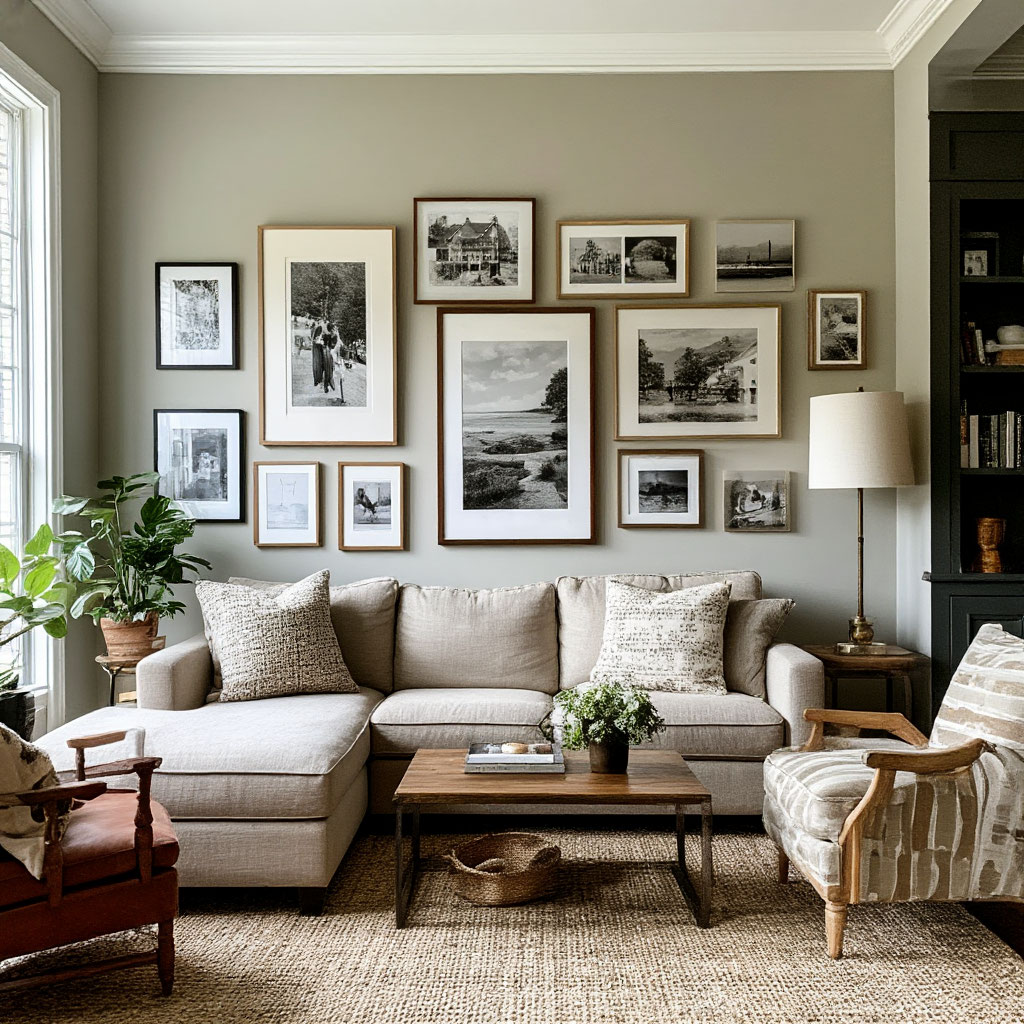
Why Everyone Is Obsessed With Wall Art Displays
Homeowners and renters alike are ditching boring, blank walls in favor of dynamic compositions. A well-chosen gallery wall instantly adds character, making even the most basic space feel intentional. Plus, it’s flexible—swap items out seasonally or mix in new finds without a complete overhaul. Social media is fueling this trend, with Pinterest and Instagram brimming with fresh ideas for wall art displays. From minimalist grids to eclectic salon-style hangings, there’s a look for every taste.
How Gallery Walls Elevate Your Space
Think of your walls as a blank canvas waiting to be customized. A gallery wall isn’t just decor; it’s a reflection of your style. Love traveling? Display maps and postcards. Love bold colors? Play with bright prints. Framed textiles can add warmth and texture. The key is balance—mixing sizes, shapes, and materials without overwhelming the eye. That’s where clever wall decor tips come in handy, helping you arrange items so everything flows naturally.
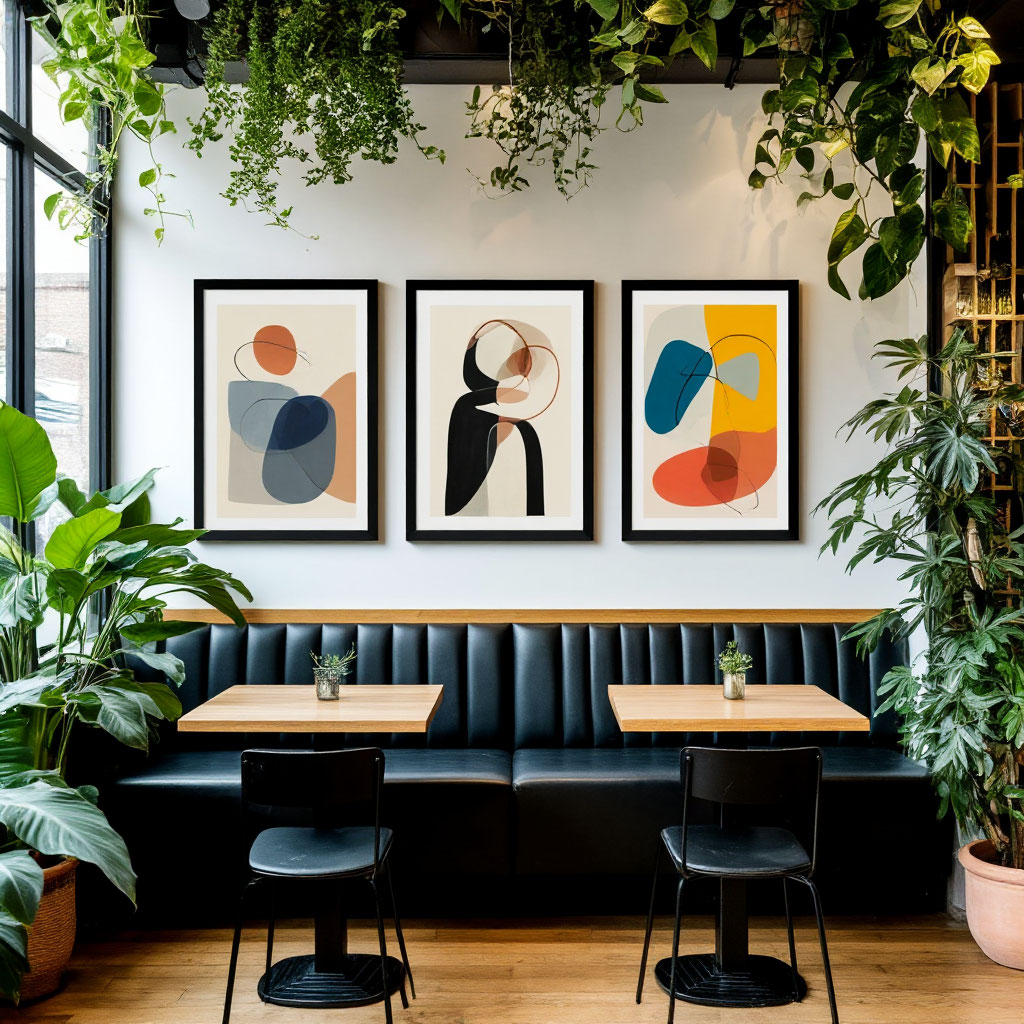
The Appeal of Customizable Home Decor
One reason gallery walls remain on trend? They grow with you. Unlike permanent wallpaper or murals, you can change the arrangement at any time. Start small with a few frames, then expand over time. Experiment with different themes by mixing:
- black and white photography and abstract art;
- vintage and contemporary.
Learning how to create an evolving gallery wall will keep your space feeling fresh and never stale.
Where Gallery Walls Work Best
This trend isn’t limited to living rooms. Areas that can benefit from a well-planned display include:
- hallways,
- staircases,
- bathrooms.
Small spaces? Try a vertical line to draw the eye upward. Large walls? Opt for a sweeping mix of frames and objects. Their versatility makes gallery walls a favorite choice for designers looking to add depth and interest to any room.
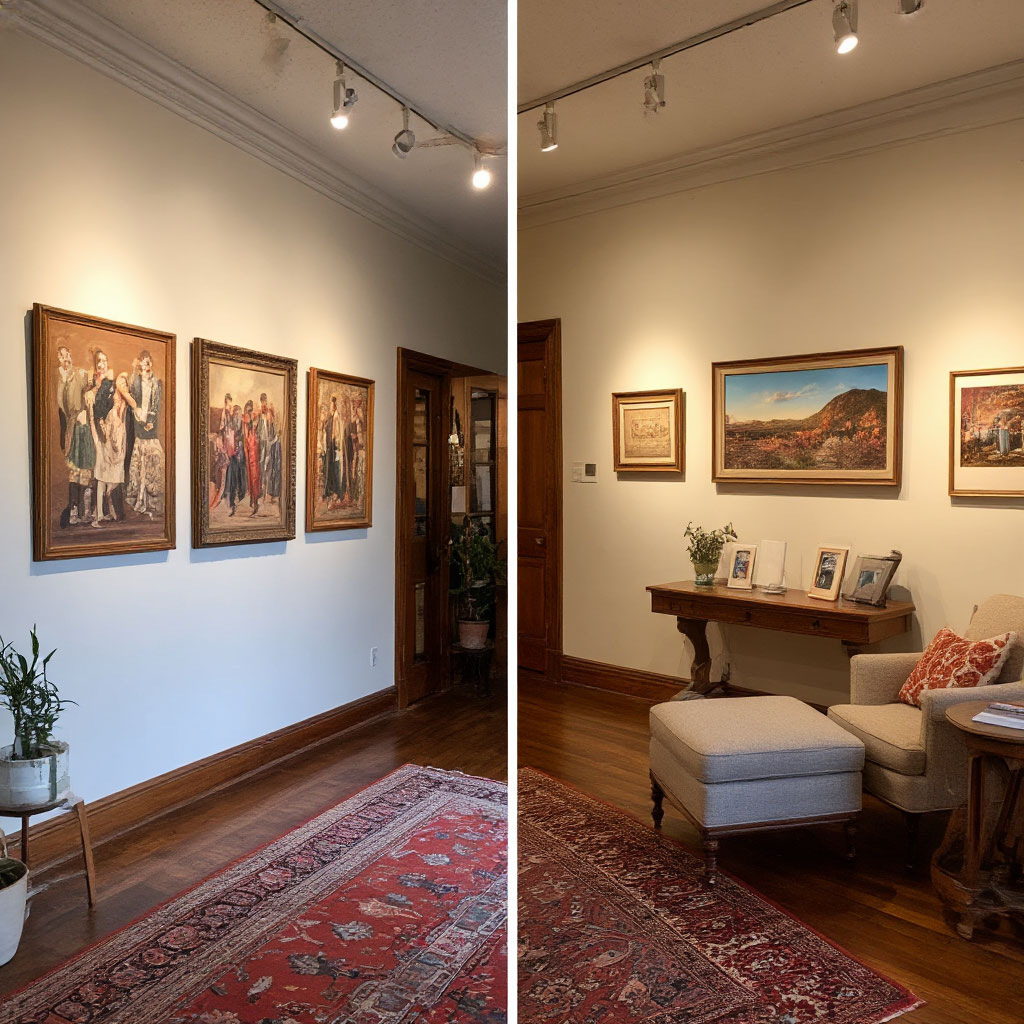
Why This Trend Is Here to Stay
Gallery walls strike the perfect balance between structure and creativity. They offer a polished yet personal touch that mass-produced art simply can’t match. As more people opt for thoughtfully designed interiors over cookie-cutter decor, this trend continues to gain momentum. Whether you’re a minimalist or a maximalist, there’s a way to make it work—and that’s why it’s here to stay.
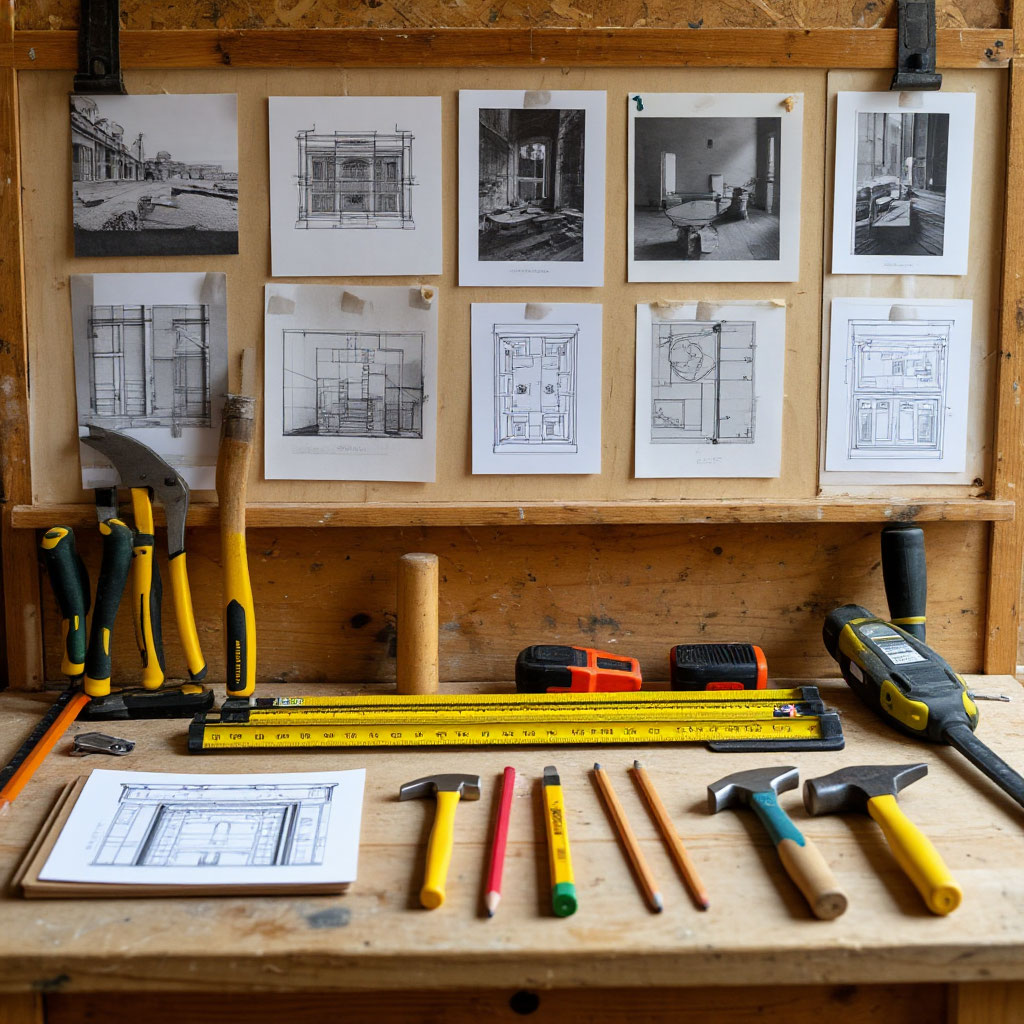
Tool and Layout Tips for Beginners
Before you begin a gallery wall project, you’ll need the right supplies:
- Start with a tape measure—accuracy is key when placing frames.
- A level keeps everything level (no crooked art allowed!).
- Painter’s tape is great for marking out layouts without damaging the walls.
If you’re unsure of placement, try paper templates cut to the dimensions of your frames. Just stick them down, rearrange them as needed, and when everything looks right, you’ll have your guide.
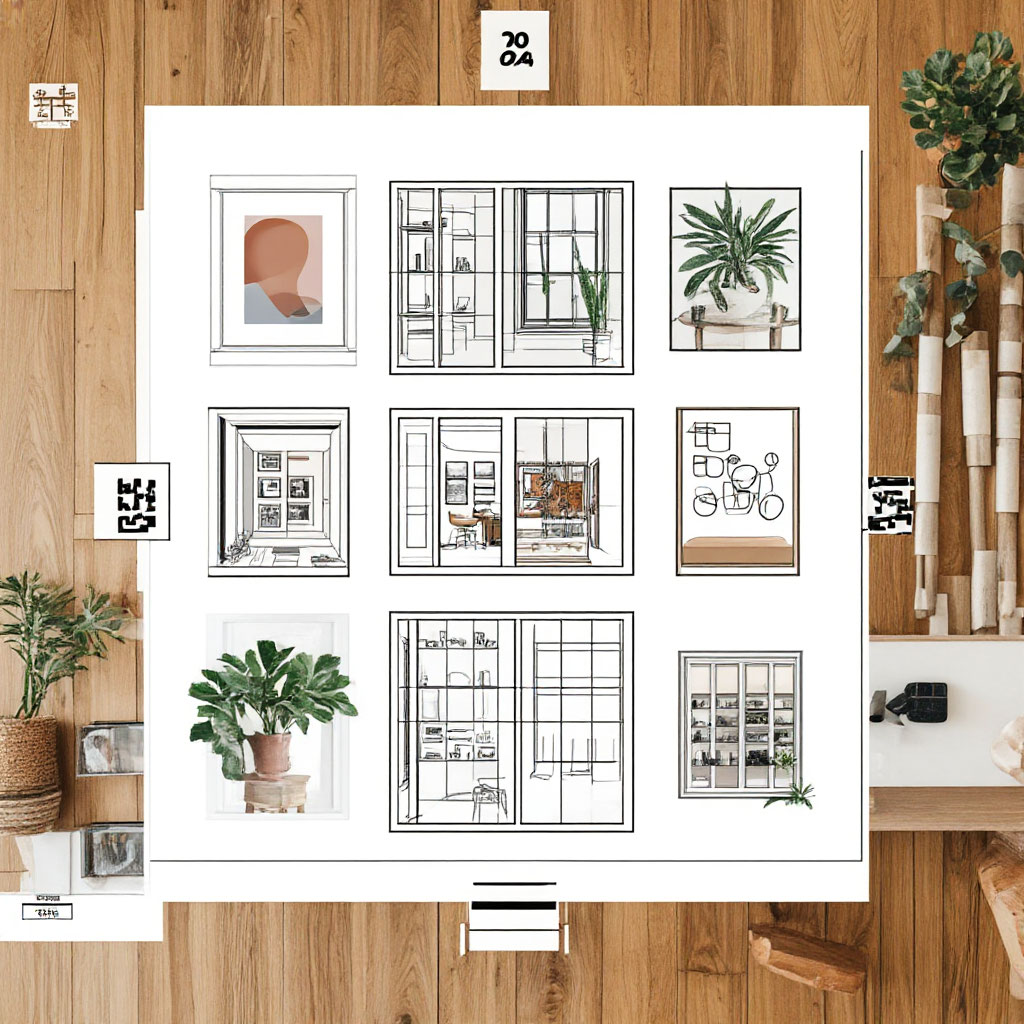
Choosing the Right Gallery Layout
Layout sets the tone for your entire display. Symmetrical grids look clean and modern, perfect for mixing frames. Asymmetrical clusters add energy, especially when mixing art sizes. For staircases or slanted ceilings, a diagonal flow keeps the eye moving. Don’t worry about perfection—sometimes the best wall display ideas come from playing with spacing until you get it right.
Spacing and Balance: The Secret to a Sophisticated Look
Even spacing between frames (usually 2 to 3 inches) creates harmony. Start with the largest piece as an anchor, then build around it. Odd numbers tend to look more dynamic, so groups of three or five pieces work well. If you’re mixing framed fabric art or other textiles, treat them like any other piece—just be mindful of the thickness so they don’t stick out awkwardly.
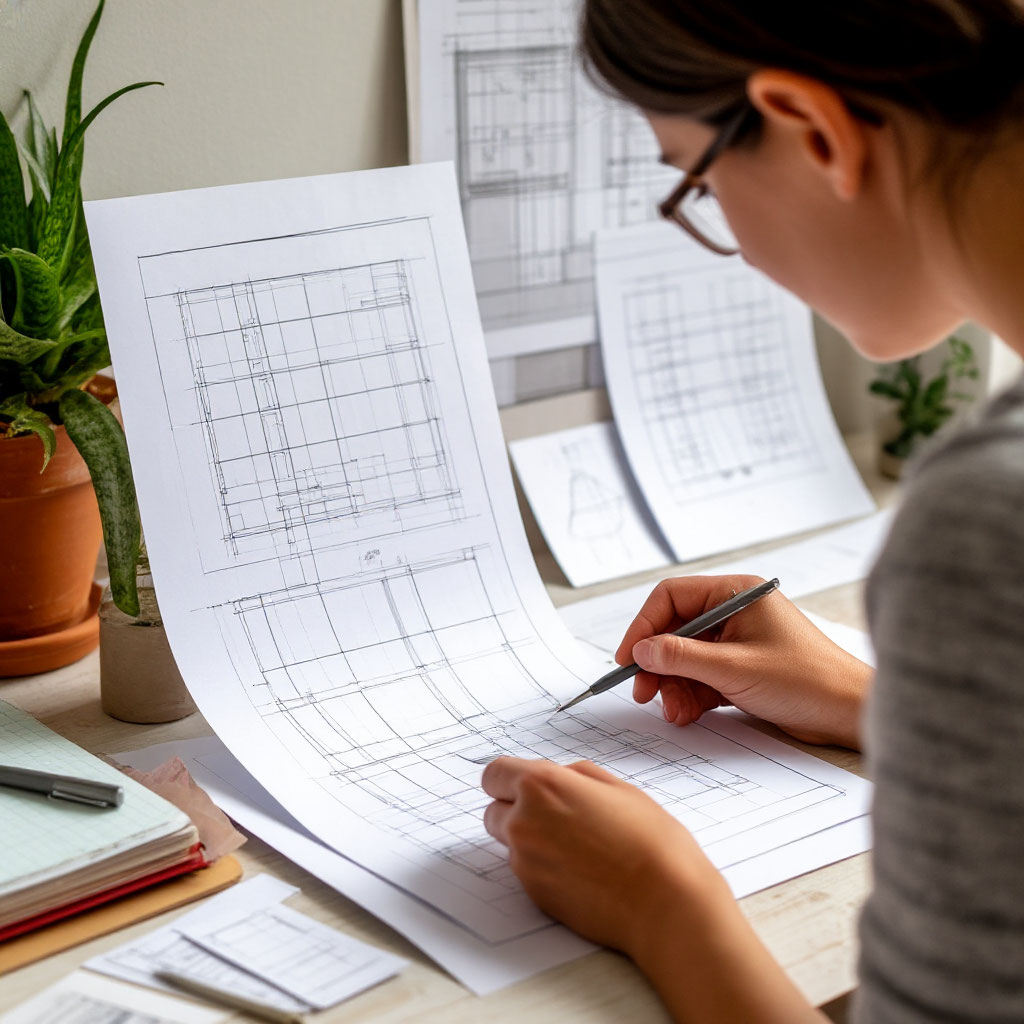
Planning Without the Guesswork
Lay everything out on the floor first to test out your gallery wall layout. Take a photo for reference—it’s easier to spot imbalances before you hang. For larger walls, mark a center point and work outward. Pro tip: Use washi tape to outline the general area you want to fill. This will keep your display discreet and intentional.
Hanging Methods for Different Wall Types
Drywall? Picture hooks or nails will do. For plaster or brick, choose adhesive strips or special anchors. Heavy frames require proper fastenings — don’t risk a fall! If you’re renting, look into damage-free hanging solutions like tension rods or tilting displays.
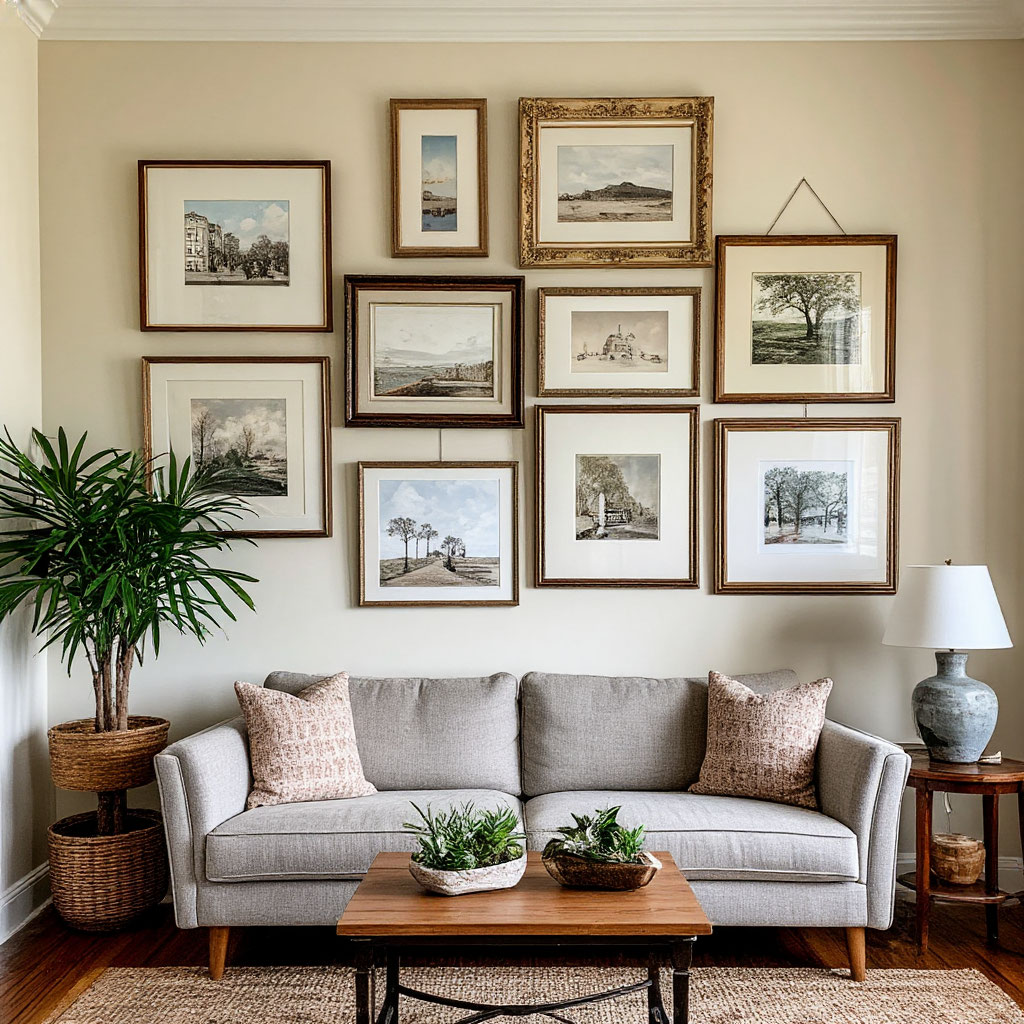
Lighting and final setup
Once everything is in place, step back and assess. Lighting can elevate your gallery walls — aim for adjustable spotlights or picture lights to highlight key elements. Notice gaps? Insert small items like decorative plates or sconces. The goal isn’t rigidity. It’s a collection that feels put together over time.
How to Mix Frames with Home Textiles for a Cozy Gallery Wall
Who says fabric has to stay on furniture? Using textiles in gallery wall art adds warmth and dimension that traditional framed art can’t achieve. Think:
- embroidered tapestries;
- vintage scarves under glass;
- framed quilt squares.
These pieces will add texture and movement to your display. The trick is to balance them with other elements so your wall looks curated rather than cluttered.

Choosing the Right Fabrics for Your Gallery Wall
Not all fabrics are created equal when used on walls. Look for pieces with interesting patterns, rich colors, or special meaning—perhaps a piece of vintage lace or a bold ikat print. Avoid anything too thin; the fabric should hold its shape when stretched or hung. For framed fabric art, consider having the pieces professionally stretched with backing to prevent sagging over time.
Mix Materials Like a Pro
The magic happens when you combine different textures. Pair thick woven wall hangings with sleek metal frames, or offset delicate embroidered pieces with rustic wood borders. Vary the thickness, too—let some fabrics float in deep box frames while others sit flush against the glass. This creates rhythm and keeps the eye moving across the gallery wall.
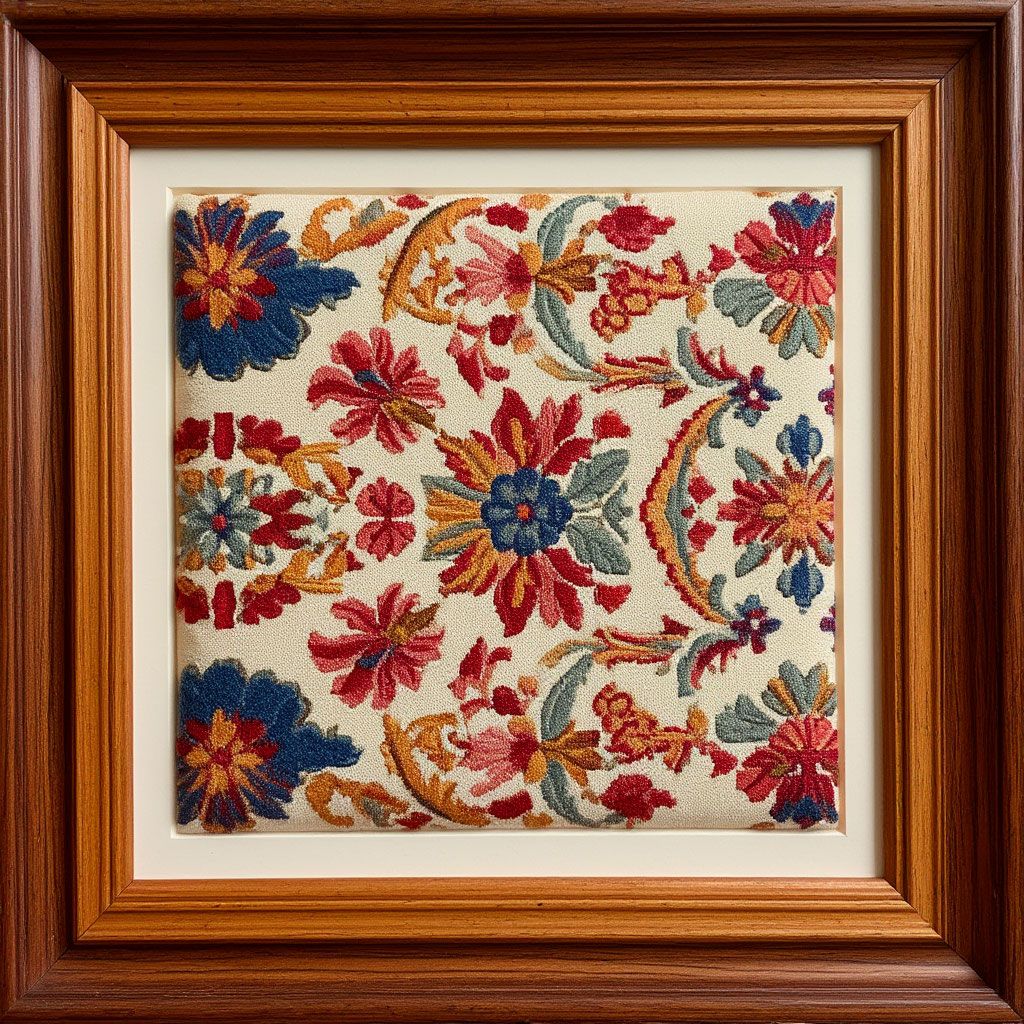
Color Coordination Without the Match-Match Effect
You don’t have to have everything in the same hue. Instead, pick one or two colors from your textiles and repeat them in adjacent photos or framed art. A navy rug can complement indigo fabric panels, while warm wood tones can tie together natural fiber wall hangings. The goal is visual harmony, not perfect symmetry.
Placement Strategies for Displays Using Textiles
Heavier textiles often work better as anchors — place them at the bottom or center of your composition. Thinner fabrics can float higher. Leave a little extra space around bulky pieces. Overcrowded textiles can quickly look sloppy. And don’t forget about lighting — a well-placed spotlight can make woven textures pop.
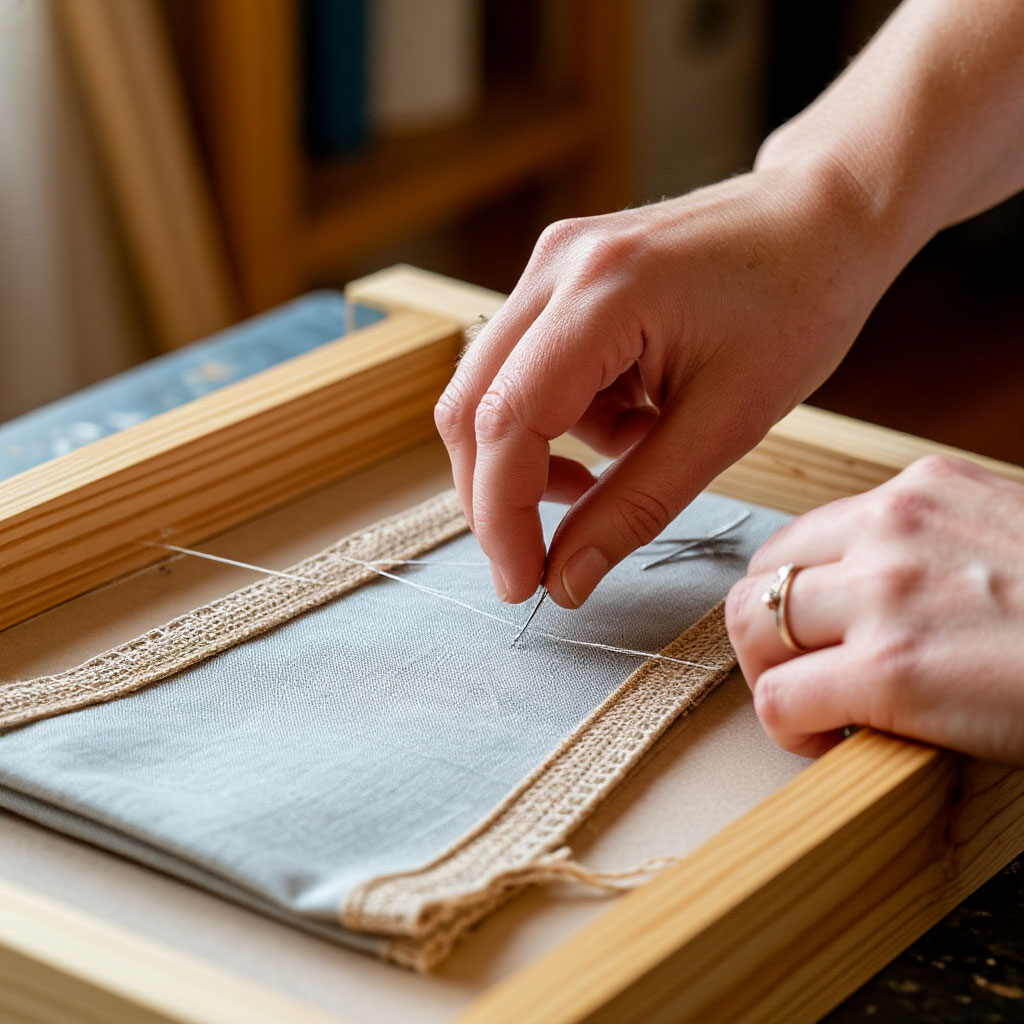
Unexpected Textile Touches Beyond Frames
Get creative with soft materials:
- Try draping a lightweight shawl over part of a floating shelf that holds framed works.
- Set up a decorative basket next to your art collection.
- To reinforce the textile theme, install a macrame plant hanger strategically placed next to a gallery wall layout.
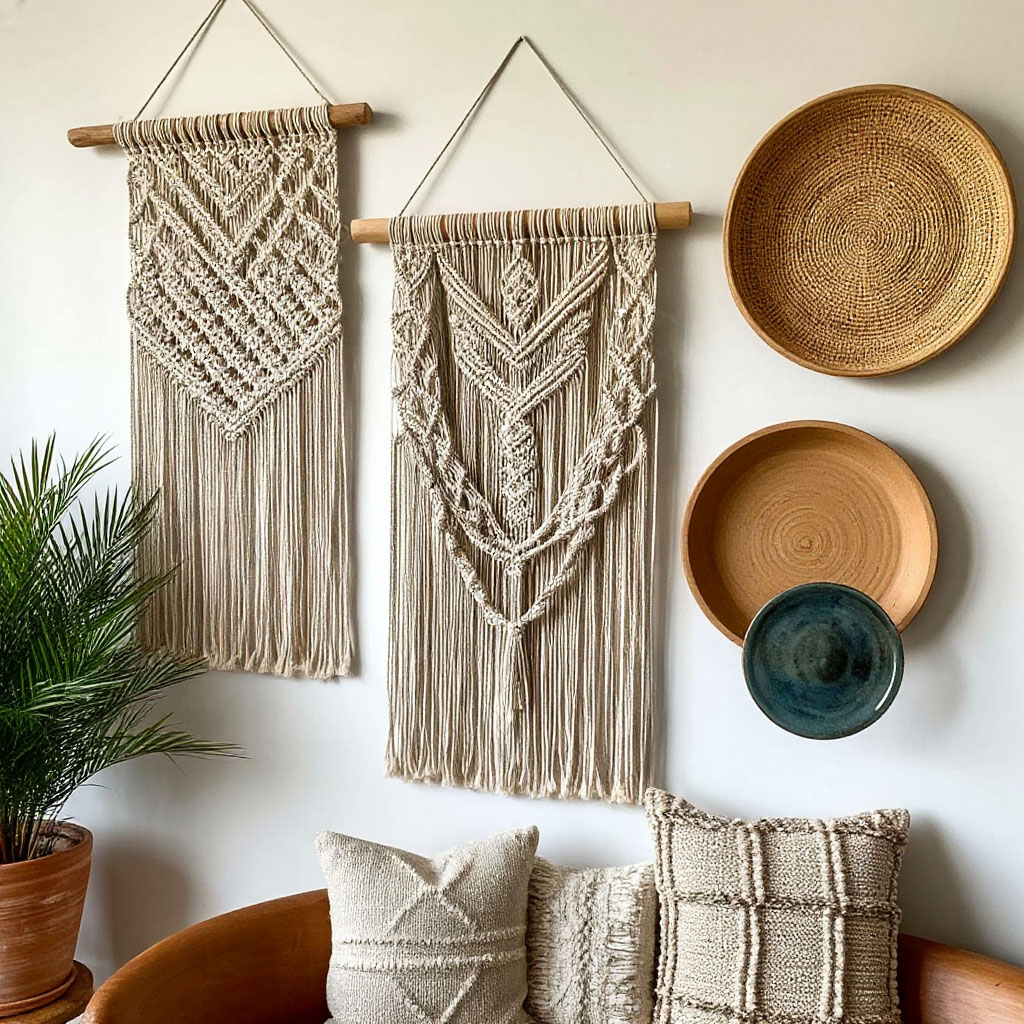
Caring for Your Textile Wall Art
Dust happens, especially with fabric displays. Gently vacuum framed textiles with a brush attachment every few months. Rotate sun-sensitive items seasonally to prevent fading. For unframed pieces, a gentle steaming every now and then keeps them looking fresh without the harshness of an iron.
Finishing Touches for a Balanced Gallery Wall
You’ve hung all your pieces, but something feels a little off – don’t worry, that’s okay. The last 10% of creating a gallery wall is crucial. Walk around the room and view your display from different angles. Notice how the light hits certain frames at different times of the day. Sometimes shifting just one element by half an inch creates an “aha” moment of perfect balance.
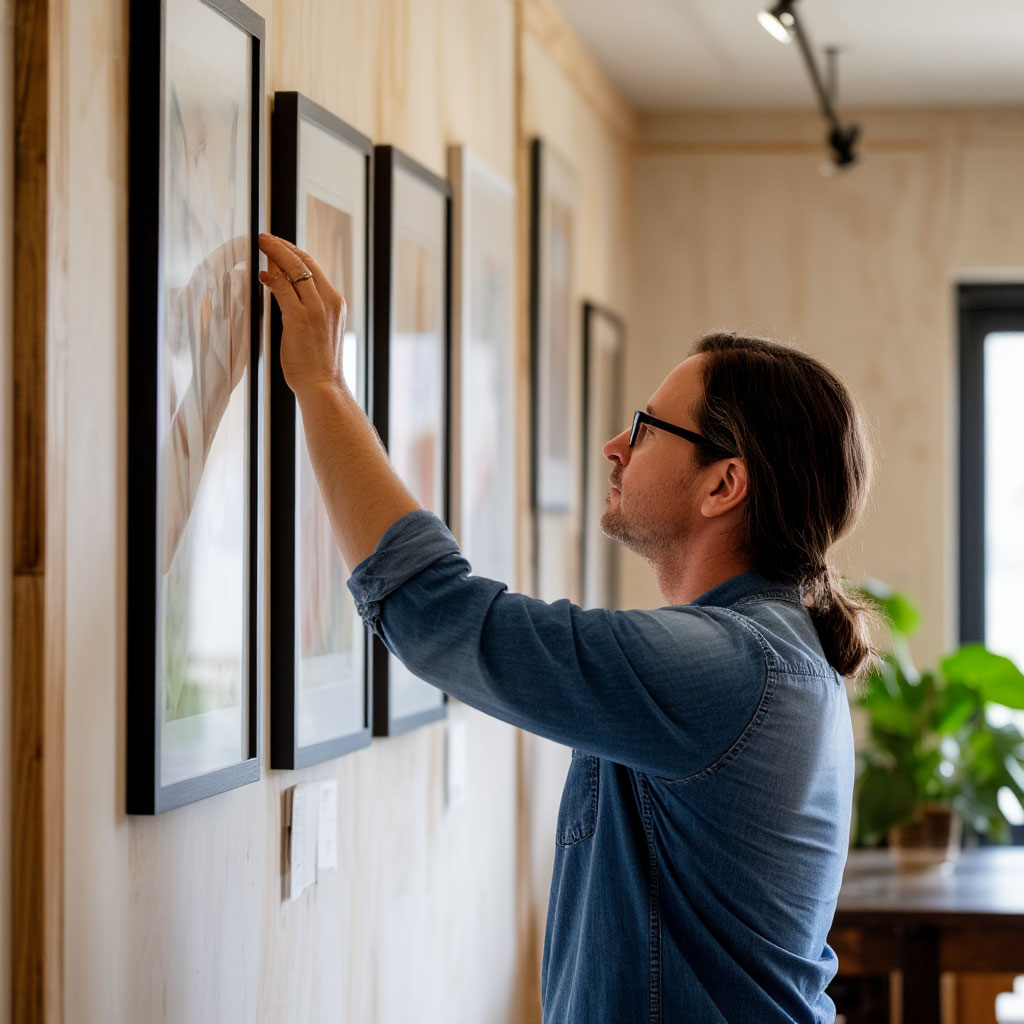
Play with Visual Weight Distribution
Not all artwork has the same presence. A large black and white photograph requires more attention than a small watercolor. Balance heavier pieces by grouping several lighter pieces across from them. If your gallery wall layout feels lopsided, try adding a cluster of three small frames to offset one dominant piece. Remember, negative space is also part of the composition – it gives the eye a place to rest.
Adding Dimension with Layered Elements
Take your display beyond flat surfaces by adding depth:
- Lean a small framed painting against the wall in front of a larger hanging piece.
- Place a shallow shelf underneath part of your arrangement to display sculptural objects.
- For framed fabric paintings, consider using shadow boxes to create real layers that reflect light differently throughout the day.
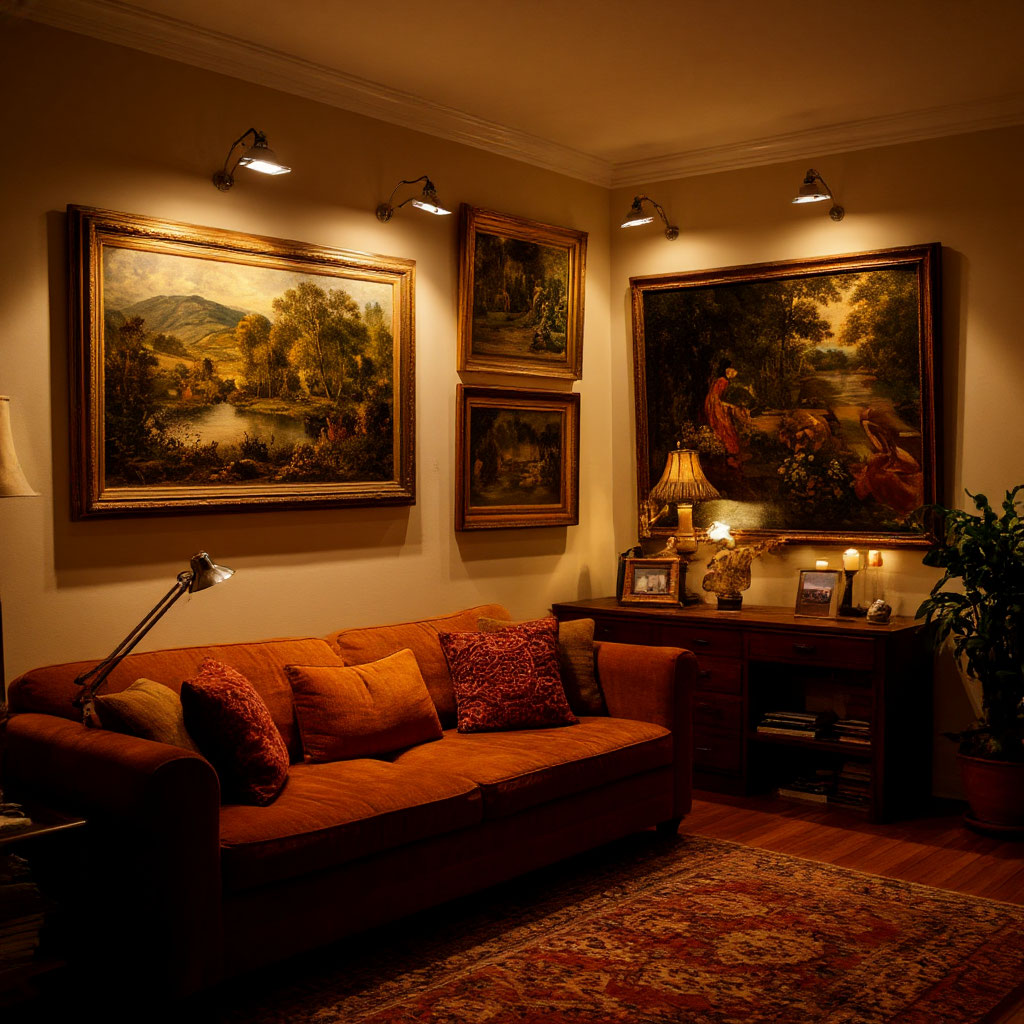
The Magic of Mats and Frame Diversity
Those thin strips of cardboard around artwork? They’re a secret weapon. Varying the width of the mat can dramatically change how pieces relate to each other. Try a 4-inch mat on one photo and a thin 1-inch frame on another nearby. Mixing frame finishes—like glossy black next to distressed brass—adds interest without chaos. Just keep one common element, like all-white mats or uniform wood tones, to tie everything together.
Lighting as Your Finishing Touch
The right lighting takes gallery walls from good to gallery-worthy. Install adjustable picture lights above key pieces, or use track lighting to highlight different sections. For a softer glow, place a floor lamp nearby to cast a warm, diffused light across the entire display. Avoid direct overhead lighting, which creates unflattering shadows on the framed glass.
Living with Your Art Before Finalizing
Give yourself a few days to live with the arrangement. You may notice that one piece appears too tall when you’re sitting on the couch, or that certain colors don’t work together at different times of day. Keep a level and hammer handy for those little adjustments that make everything fall into place. The best ideas for wall art are often revealed in everyday life.
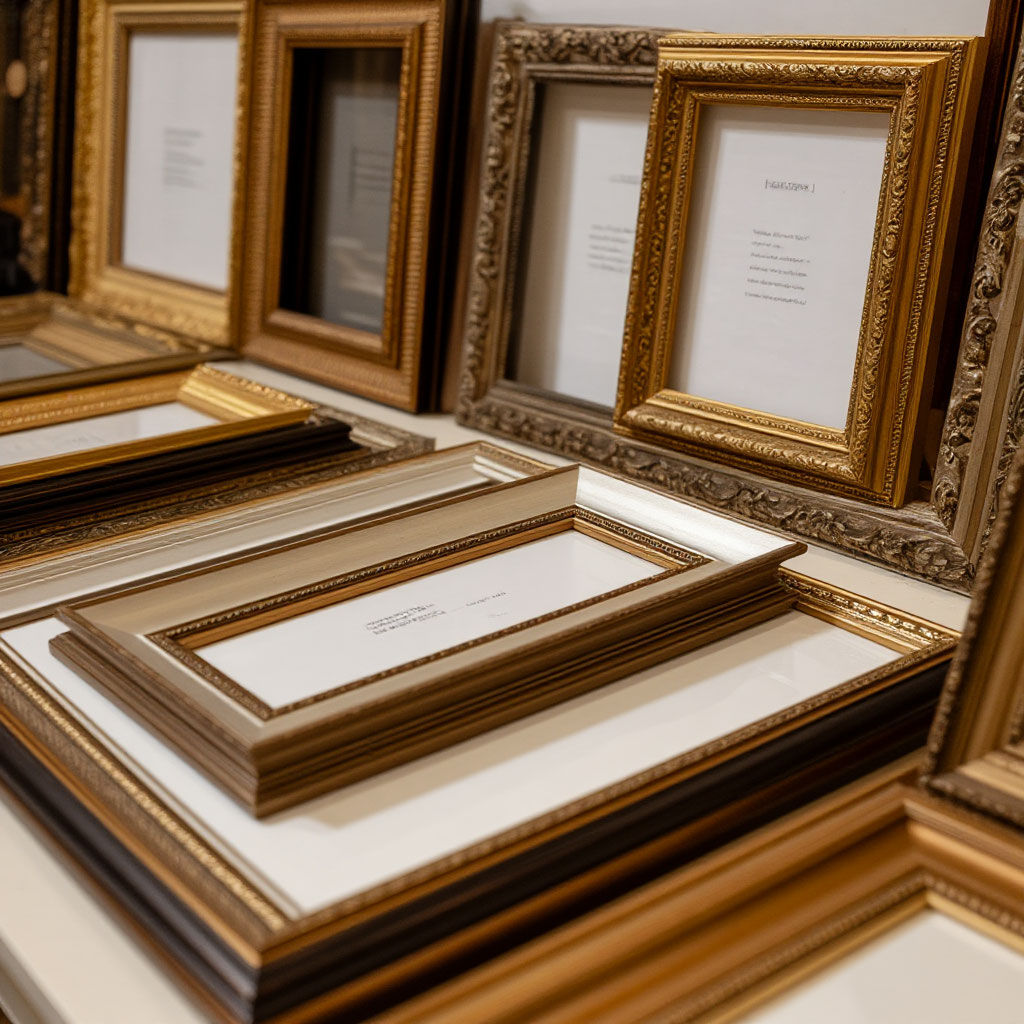
When to Stop Reworking
There’s a fine line between reworking and overworking. If you find yourself constantly moving the same frame, it’s time to step away. Gallery walls should feel put together, not clinically perfect. That slightly off-center section? It probably adds character. Remember, you can always tweak the display later as you find new treasures.
Caring for Your Masterpiece
Give your frames a regular wipe with a microfiber cloth to keep your display looking fresh. Check every few months to make sure all hangers are securely fastened — there’s nothing worse than that midnight thud from a fallen frame. For valuables, consider using UV-protected glass to prevent fading over time.
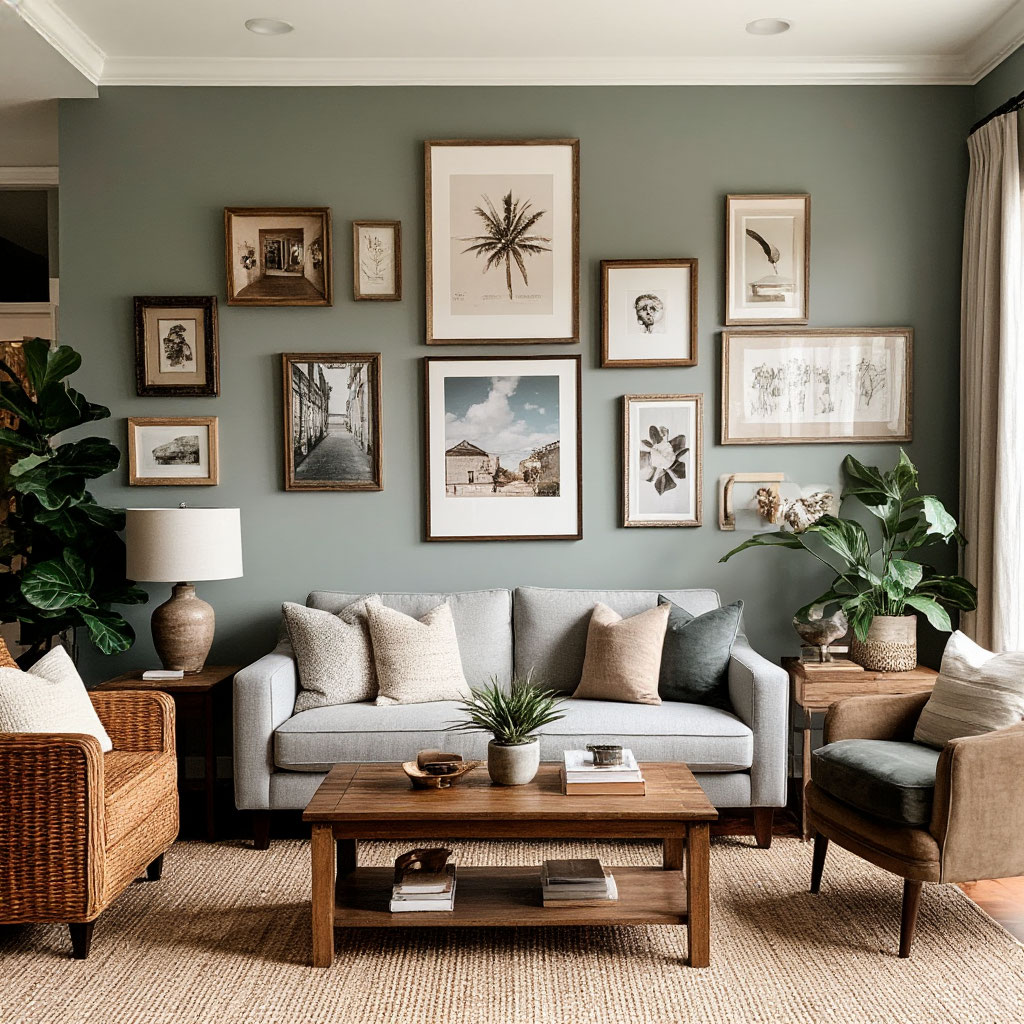
Creating the perfect gallery wall isn’t about following strict rules – it’s about creating a space that feels uniquely yours. Whether you’ve gone bold with mixed frames, incorporated cozy textiles, or kept things clean and symmetrical, the most important thing is that your display tells your story. Remember, even the most carefully planned arrangements can change over time.
Switch out pieces, experiment with new layouts, and let the wall grow with your style. With these wall decor tips, you have everything you need to create a gallery wall that will wow the imagination. Now, step back, admire your work, and revel in the personal charm it brings to your home.
You can now download a gallery wall checklist — a practical companion to help you plan, balance, and refine your wall decor effortlessly.
